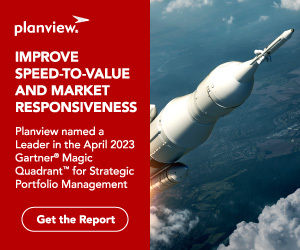
Photo: Manivasagan N, https://www.dtnext.in
I’ve written many times that portfolio management is about change: changing attitudes, changing tactics, and changing how you invest your limited funds and focus your talented teams. We all know change is difficult, leading us away from a known environment and into an unknown future. But the issue at hand is more than a simple case of the devil you know vs. the devil you don’t.
Sunk cost thinking makes change even more challenging. Once we are working on a project our tendency, as humans, is to keep working on it. This remains true even when we are faced with mounting evidence that the project outcome will not live up to our expectations. We all have an innate tendency to look backwards (at what we’ve invested) while we look forwards (and decide how much more to invest), and this leads us to limit our options time and time again. Consider these individual examples (collected in the fantastic book Essentialism by Greg McKeown):
- If we double-book prepaid vacations, we’re more likely to take the more expensive vacation, even if we admit to preferring the less expensive one.
- If we’re given a coffee mug to keep we value it more (90% more, according to experiments by Daniel Kahneman) than if we’re asked how much we would pay for that same coffee mug.
The link to innovation is clear: Sunk cost thinking can prevent us from being (appropriately) fast-to-fail and can keep us from freeing up funds for more promising or more strategically relevant initiatives.
What to do?
Here are three ways to counter sunk-cost thinking:
- Don’t ask “should we keep spending money on this initiative?” The question to ask is: Would we spend money on this idea if we encountered it for the first time, given all that we know today? (It is instructive that, among drug development companies, development programs that are licensed-in from outside the company are 30% more likely to be successful than home-grown projects at a similar stage of development. This is direct evidence of the stricter screen firms apply to initiatives sourced from outside vs. those developed internally.)
- Don’t paint project cancellations as failures. Celebrate failures as:
- An opportunity for learning and wisdom, so the same lesson never needs to be learned twice
- A way to free up people and funds for more rewarding activities (Google X throws a party when a project fails; what happens at your firm?)
- Keep a list of unfunded, but worthy, initiatives up-to-date. This allows everyone to see the opportunity cost of not cancelling less-worthy projects.
One caveat: Don’t turn the prohibition on sunk-cost thinking into a license to cancel a project at a moment’s notice. Absent irredeemable faults, funding should be guaranteed to the next milestone lest an atmosphere of chaos, uncertainty, and fear preoccupy the project teams. At the same time, tie that funding to a clear set of goals so that when the milestone hits everyone can agree on whether the project met interim performance goals.
Here’s to not throwing (good money and precious time) after bad in our personal and professional endeavors!




